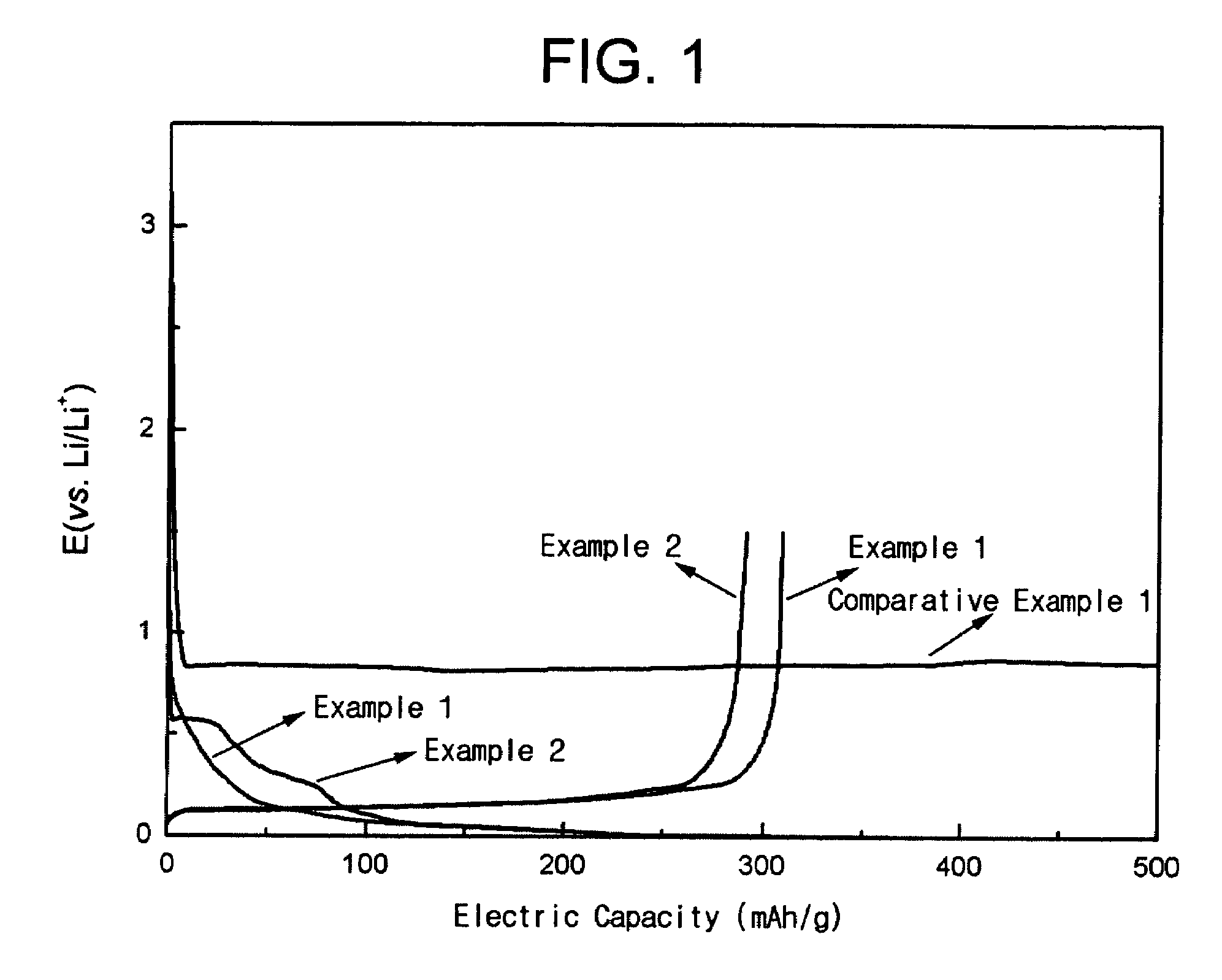Organic electrolytic solution and lithium battery employing the same
a lithium battery and electrolytic solution technology, applied in the field of lithium batteries, can solve the problems of conventional aqueous electrolytic solutions that cannot be used, the risk of fire due to leakage of electrolytic solutions, and the inability to use electrolytic generators
- Summary
- Abstract
- Description
- Claims
- Application Information
AI Technical Summary
Benefits of technology
Problems solved by technology
Method used
Image
Examples
example 1
Preparation of Electrolytic Solution
[0080]3% by weight of di(trimethylsilyl) malonate represented by formula (4) was added as an additive to an organic solvent mixture containing 30% by volume of propylene carbonate and 70% by volume of dimethyl carbonate and 1M LiPF6 was used as a lithium salt to prepare an organic electrolytic solution.
[0081]
example 2
Preparation of Electrolytic Solution
[0082]An organic electrolytic solution was prepared in the same manner as in Example 1, except that 5% by weight of di(trimethylsilyl) malonate represented by formula (4) was added.
example 3
Preparation of Electrolytic Solution
[0083]An organic electrolytic solution was prepared in the same manner as in Example 1, except that 1% by weight of di(trimethylsilyl) malonate represented by formula (4) was added.
PUM
| Property | Measurement | Unit |
|---|---|---|
| thick | aaaaa | aaaaa |
| thick | aaaaa | aaaaa |
| thick | aaaaa | aaaaa |
Abstract
Description
Claims
Application Information
 Login to View More
Login to View More - R&D
- Intellectual Property
- Life Sciences
- Materials
- Tech Scout
- Unparalleled Data Quality
- Higher Quality Content
- 60% Fewer Hallucinations
Browse by: Latest US Patents, China's latest patents, Technical Efficacy Thesaurus, Application Domain, Technology Topic, Popular Technical Reports.
© 2025 PatSnap. All rights reserved.Legal|Privacy policy|Modern Slavery Act Transparency Statement|Sitemap|About US| Contact US: help@patsnap.com



